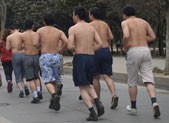
Thirdly, even if Japan forcibly submits the "Amami Ryukyu" World Natural Heritage project with the Diaoyu Islands included in it, it is impossible to muddle through. After the submission, the application will go through the procedure of detailed assessment by the World Heritage Committee and its professional assessment agencies on the sovereignty adscription of the applied object. They will decide whether it has the value needed to become World Heritage.
In July 2008, the World Heritage Committee approved Cambodia's application for the disputed area of Preah Vihear Temple as a World Heritage, which is located in Cambodia and Thailand border. The territorial dispute between the two countries rapidly upgraded and gave rise to the confrontation between the two armies for quite some time.
Considering this historical lesson, the United Nations would be very cautious on heritage application project located at disputed areas. Japan's attempt to fish in troubled waters will be completely delusional. For the occupation of the Diaoyu Islands, Japan has tried absurd ways: Shintaro Ishihara's proclamation to "purchase the Islands" followed by the Japanese government's implementation of the so-called "nationalization" of China's Diaoyu Islands both caused strong oppose and effective counter of the Chinese government and people.
As for now, Ishigaki city and the Japanese government collaborate with each other and throw out the trick of heritage application, in the attempt to make a further fierce hype on the Islands' sovereignty issue in the international community. Its malevolent intentions are obvious.
Read the Chinese version: 日本拿钓鱼岛“申遗”终将成闹剧, source: People's Daily Overseas Edition, author: Wan Fangfang

















 Employees run half-naked for not meeting sales quotas
Employees run half-naked for not meeting sales quotas


![]()
